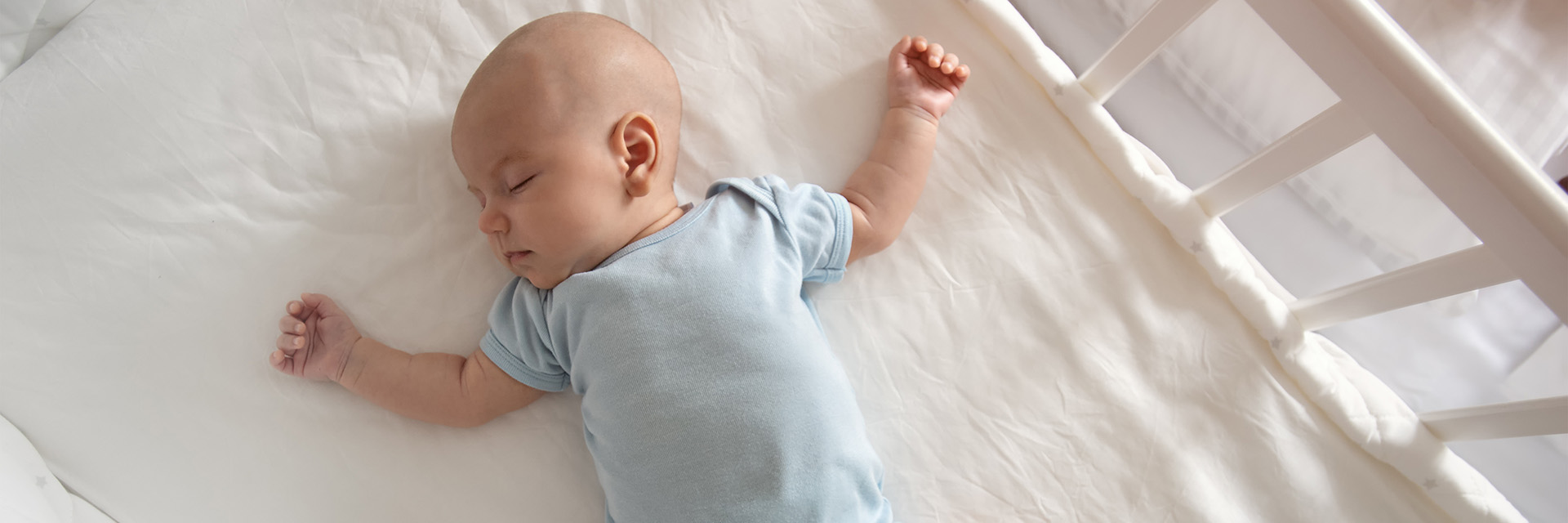The Do’s of Newborn Safe Sleep
Share a room, but not a bed
Having your baby sleep in the same room as you for at least the first six months, and ideally up to a year, can help lower their risk for sudden infant death syndrome (SIDS) or sudden unexpected infant death (SUID). According to the American Academy of Pediatrics, room-sharing can decrease the risk of SIDS by as much as 50 percent and is much safer than bed sharing. It also makes it easier for nighttime feedings, and for you to comfort and watch your baby.
“The best place for your baby to sleep is in a bassinet, crib or pack-and-play that meets current Consumer Product Safety Commission guidelines,” says Stephanie Eidson, RNC-NIC, Texas Health Clinical Education Specialist-Neonatal Intensive Care/Infants. “Bed pillows, sheets and blankets can be dangerous for babies because of the potential for suffocation or strangulation. It’s okay to bring your baby into your bed to feed or comfort, just remember to return them to their safe sleep space as soon as possible.”
Place baby on their back to sleep
Until they begin to roll over on their own, babies should sleep on their backs for all naps and at night. Babies who sleep on their backs are much less likely to die of SIDS than babies who sleep on their stomachs or sides. The reason being: babies placed in the side position can roll more easily onto their stomachs. Tummy sleeping puts infants at risk for suffocation or overheating.
“It’s a common worry among parents that babies will choke when on their backs, but the structure of baby’s airway and the gag reflex is meant to keep that from happening,” according to Eidson. “Always get the green light from your pediatrician before putting your baby to sleep on their stomach.”
Keep soft objects and loose bedding away from baby
A flat, firm surface, like a crib mattress covered with a tightly fitted sheet, is best for baby. Use only the mattress made for your baby’s crib. Avoid memory foam mattresses, and make sure there are no gaps between the mattress and the wall of the crib, bassinet or pack-and-play.
Accessories such as crib bumpers, pillows, blankets, comforters, stuffed animals, toys, and wedges or sleep positioners may look pretty and functional but they are best kept out of baby’s sleep space. Check for curtain cords and baby monitor wires. All of these things can increase the risk of accidental entrapment, suffocation or strangulation.
“If you are concerned about your baby getting cold without a sheet or blanket, an infant sleep sack or infant clothing such as a wearable blanket may be used,” Eidson says. “Our general rule of thumb is that baby should be dressed with only one layer more than we are wearing at any given time.”
The Don’ts of Newborn Safe Sleep
Resist the urge to crank up the heat
When the weather gets really chilly or really hot outside, it can be difficult to know where to set the thermostat to keep baby’s room just the right amount of cozy. If you’re not sure whether your baby is too warm, feel the nape of their neck. If it’s sweaty, baby is too hot.
“If you feel as though the room is too hot, your baby probably will too, and if you think the room is too cold, so will your baby,” Eidson says. “Experts agree that keeping the temperature between 68 and 72 degrees Fahrenheit is a good range in both the summer and winter.
If your baby was premature, you may want the thermostat on the higher end of that range in the first few weeks after they arrive home from the hospital, since preterm babies are slower to regulate their own temperature. And if your preemie gets too cold, they may expend too many calories trying to warm up.”
Don’t rely on baby monitors
A baby monitor can be a great helper for checking on baby, but it shouldn’t take the place of peeking in on baby from time to time.
“A monitor isn’t a substitute for face time with your baby during the night,” Eidson says. “A home cardiorespiratory monitor shouldn’t be used as a way to reduce the risk of SIDS. These monitors are made to alert you to changes in your baby’s heart rate and breathing. Some babies need this kind of monitor because of medical problems, but they haven’t been proven to protect against SIDS in healthy babies. Cardiac and apnea monitors should only be used under the guidance of your pediatrician.”
Avoid using household furniture as a bed
Couches, recliners and cushioned armchairs can be extremely dangerous places for your baby because they may not be equipped with protective barriers. Pillows and high sides can create a suffocation hazard, and baby can slide into open crevices.
“Infants need a safe place to sleep wherever that may be — at home, with the grandparents, in a hotel,” Eidson adds. “We are all responsible for ensuring babies get the safe, restful sleep they need.”
Talk with your pediatrician if you have questions about any of the recommended guidelines for newborn safe sleep.
*All of these recommendations are supported by the American Academy of Pediatrics. Unless noted, all recommendations are for babies up to 1 year of age.

